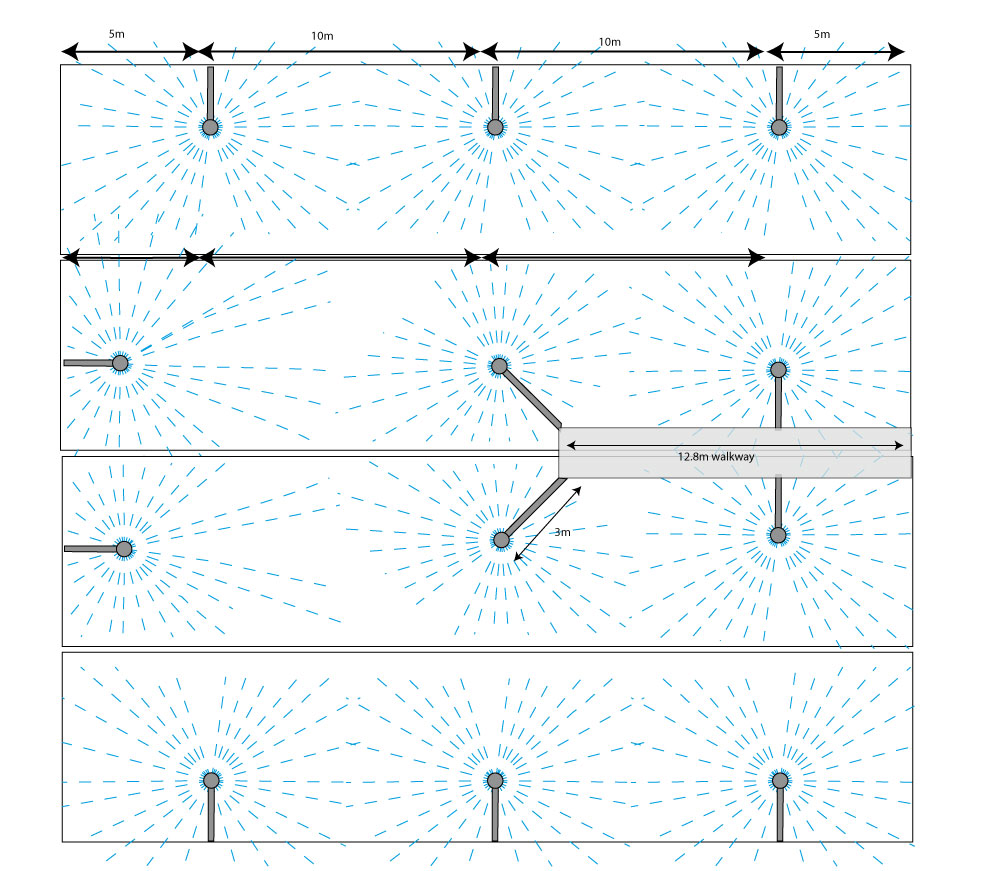Types of tank a StormBlaster™ can clean
What types of storm tank can the StormBlaster™ clean? Stormwater attenuation tanks come in many shapes and sizes. Cleaning them properly after use is very important to avoid odour pollution.
The StormBlaster™ rotary jet impingement cleaning system has been installed in many different sized tanks across the UK, Ireland and France. But what types of tank are there and which is it suitable for?
Open or closed (roofed) tanks
We can provide systems for cleaning both open tank tanks and roofed tanks. Roofed tanks are actually the easiest to deal with because we don't need to worry too much about positioning StormBlasters as they can be hung from the roof. We normally do this through a downpipe which is mounted through the roof and can be lifted out through a manhole cover so the StormBlaster™ can be maintained.
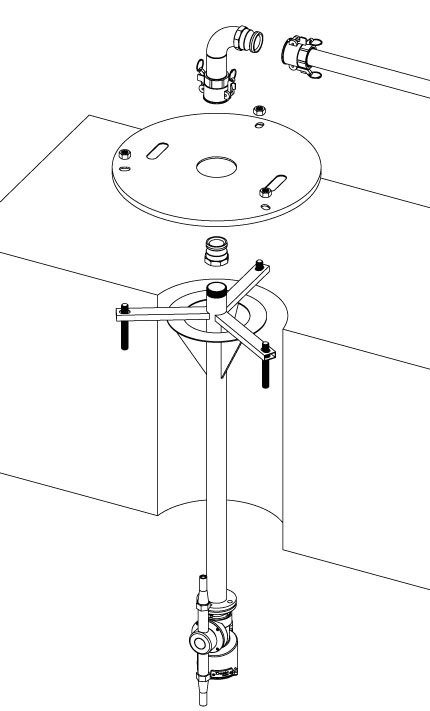
With open tanks, it’s a little more problematic. But to be perfectly honest, most of the StormBlasters we install are in open tanks because most storm tanks are actually open. So these need to be positioned with maintenance in mind. And what we tend to do is, because we haven't got a roof, we’ll tend to put them on swingarms. These swingarms will position the StormBlaster™ out into the tank, 2, maybe 3 m into the tank, and then they can be swung back to the sides for maintenance.
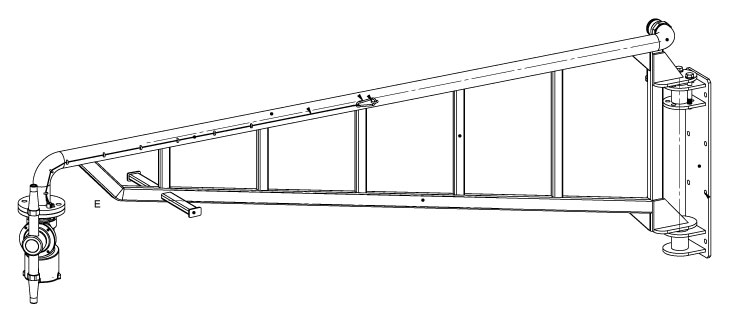
Sometimes this means we can't get them in the optimum position for tank cleaning. The optimum position for most tank cleaning applications is to be on the centre line of the tank. That way, we maximise the jet lengths of the StormBlaster™. If we can't do that in some wider tanks, we can get them as close as we can with swingarms and we can design the system to work.
Very large tanks
If a tank is too large to clean by a single StormBlaster™ unit, it’s not a problem, we just simply install multiple units. What we do is, we divide the tank up into virtual tanks, which can be seen on this diagram here. And then each StormBlaster™ is responsible for cleaning its own virtual tank.
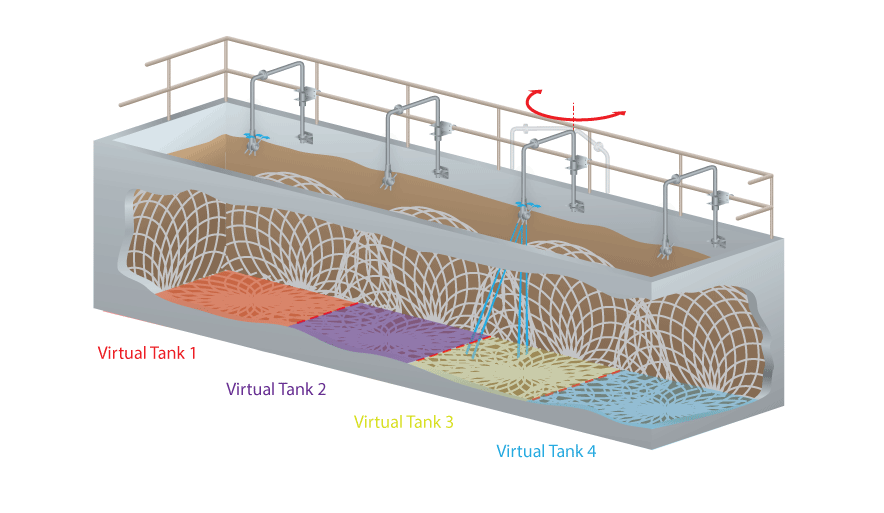
Typically speaking, you want about 1 StormBlaster™ for every 120 m² of tank floor. Normally, that means we position them maybe 10 or 15 m apart down a tank. If the tank is very, very wide, then there are some restrictions on the horizontal distances we can actually reach with the cleaning jets.
Very wide tanks
On very wide tanks that are over about 10 or 15 m in width then we would divide the tank into virtual tanks along the width axis. As you can see in the diagram below, StormBlasters have been put on each side of the tank, each one responsible for cleaning its area.
Again, we just divide the tank down its length as well. And so we end up with some more virtual tanks in there. There is a limit on the width, so if the tank is over 15 m, we probably want to come in from both sides of the tank.
The diagram below was actually an installation we did where we had 8 StormBlaster™ units, installed in 8 virtual tanks. The tanks were big - 30 by 25 m - so the shape of the tank can also make some differences in how we specify StormBlaster™ systems in there.
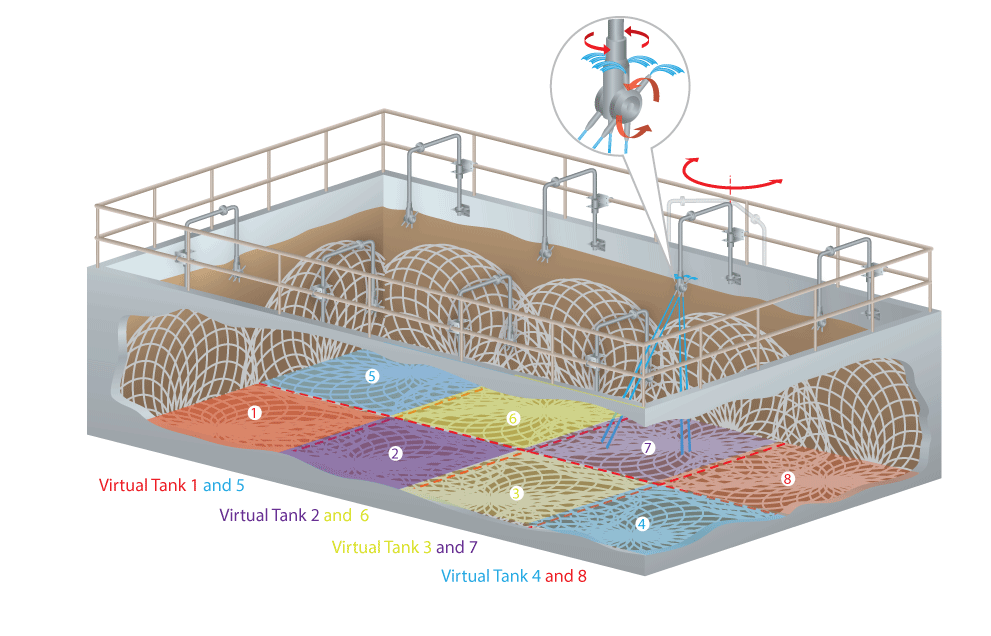
Circular tanks
The principle is just exactly the same whether it is a circular or a rectangular tank. For bigger tanks, we divide the tank into virtual tanks so they’ve each got a StormBlaster™ unit in there that’s responsible for cleaning each part of the tank and then position them either on swingarms in the case of open tanks, or on downpipes through the roof on closed tanks.
In the example below, we're seeing a very large 25 m diameter circular shaped open tank. Each of the StormBlasters are positioned on a swingarm, and each one is responsible for cleaning each quadrant of the tank.
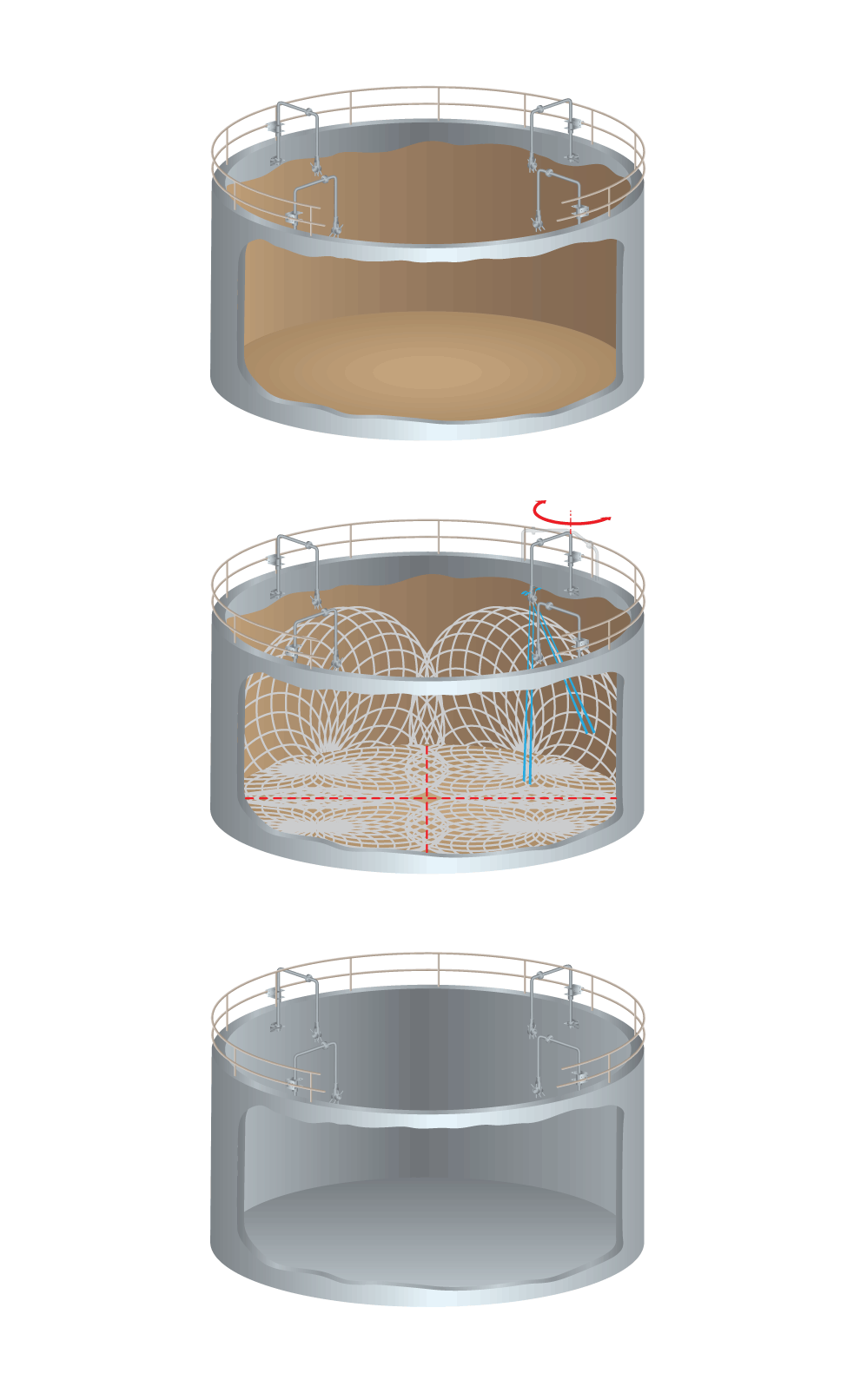
Side by side tanks
One issue we've come across is when tanks are side by side. This restricts access to the middle tanks in particular. Assuming they are open tanks, there's no easy way to get a swingarm into the centre of tanks that are positioned side by side. This requires a little bit of creativity.
So, in the example diagram below, we can see we have 4 tanks side by side. And for the central tank, we actually decided that it would be good to construct a walkway to mount the tank cleaners on and to mount the swingarms on. And as you can see here, we managed to achieve overall coverage. The rest of the tanks, the outer tanks, were serviced via swingarms mounted on the outsides of the tank. But this walkway was required to provide access.
With a little bit of creativity and imagination, even the most complex tanks and difficult tank layouts can be serviced perfectly well by the StormBlaster™ system.
